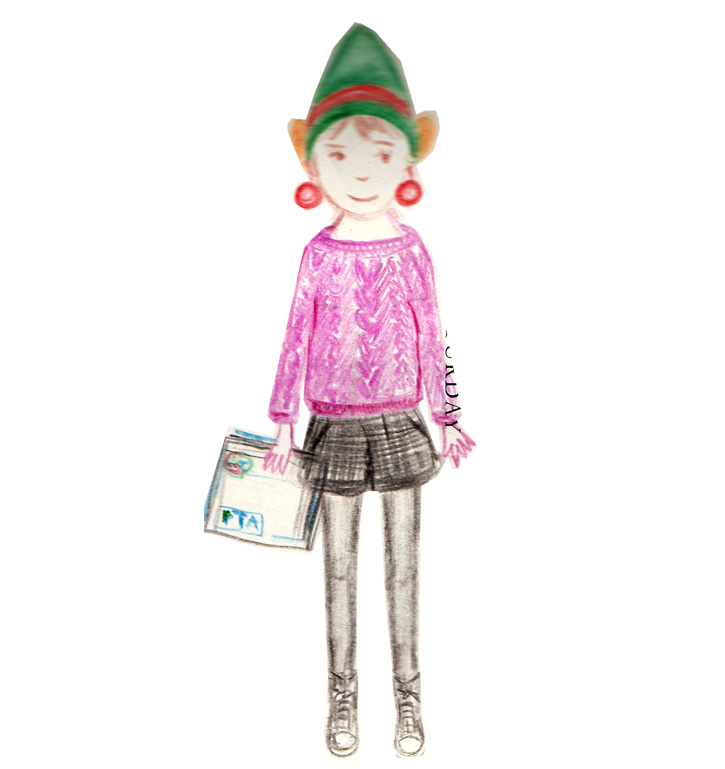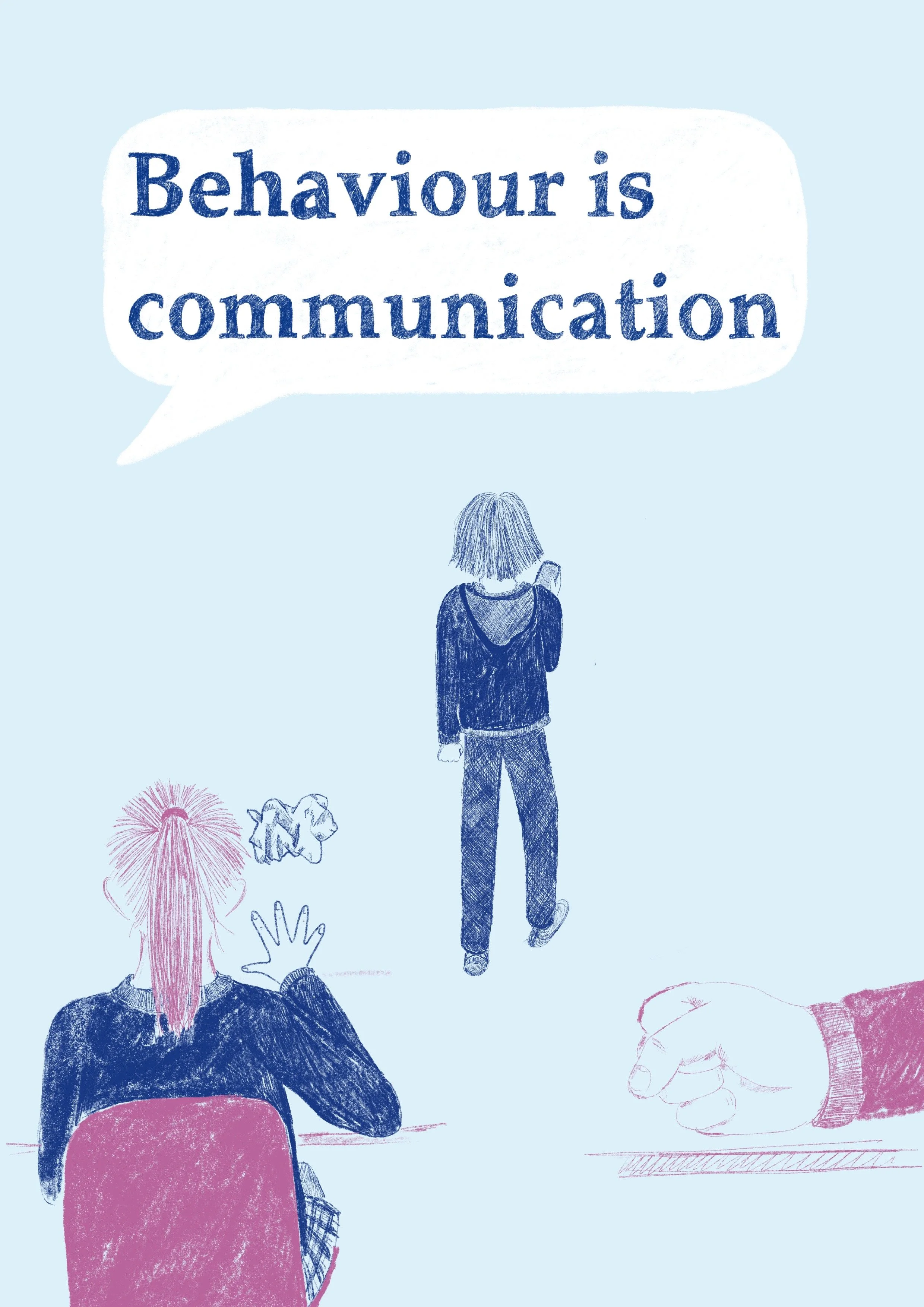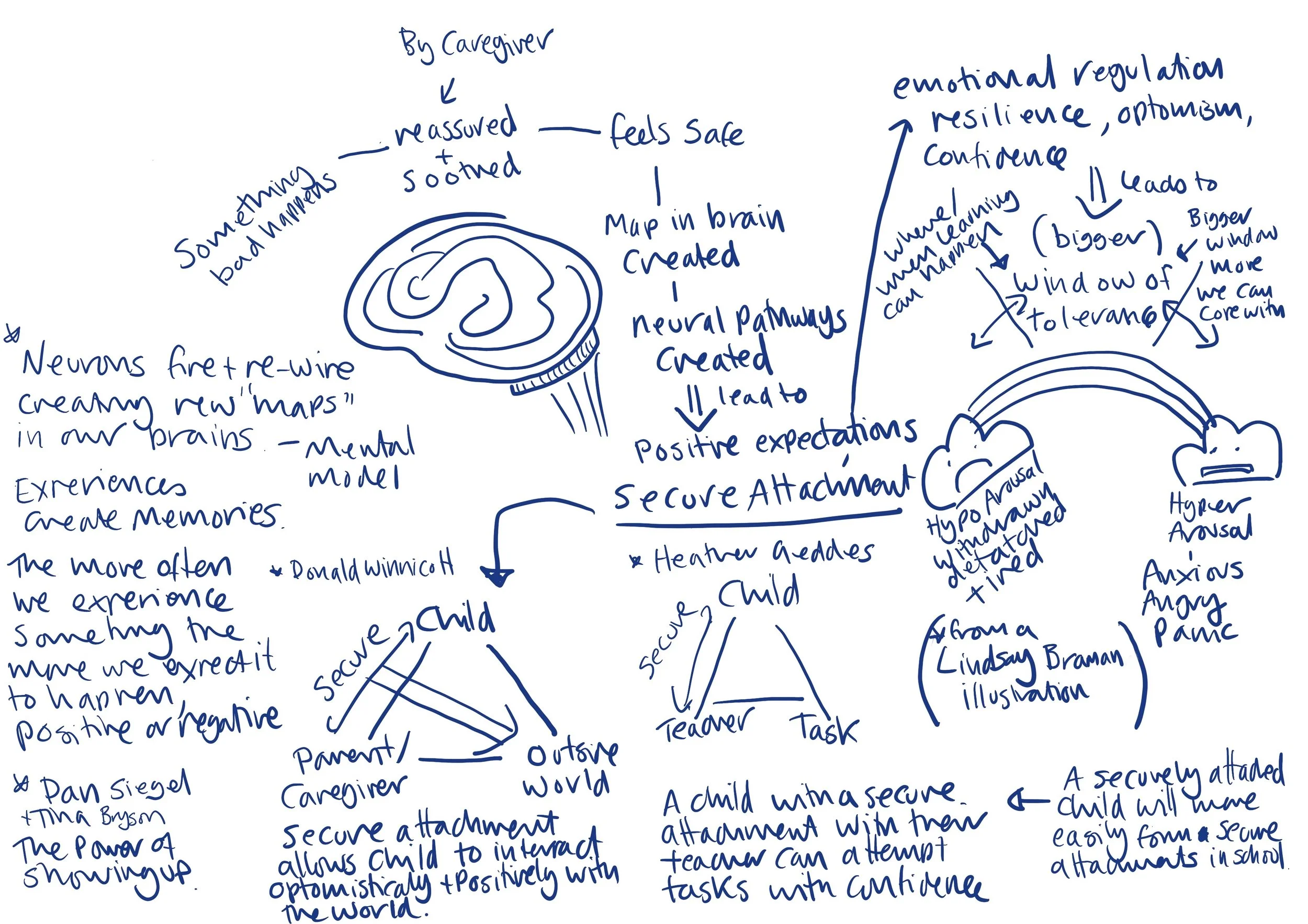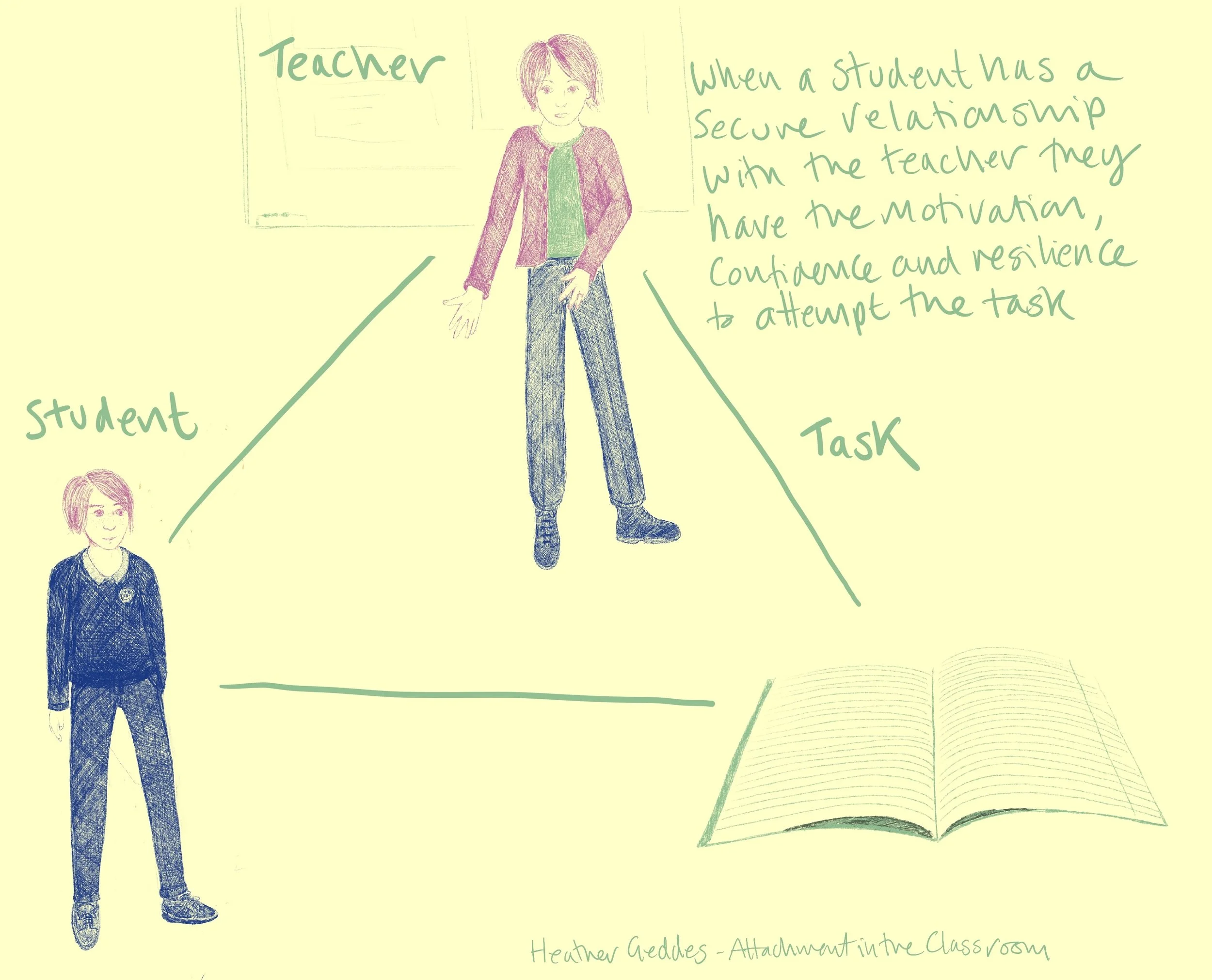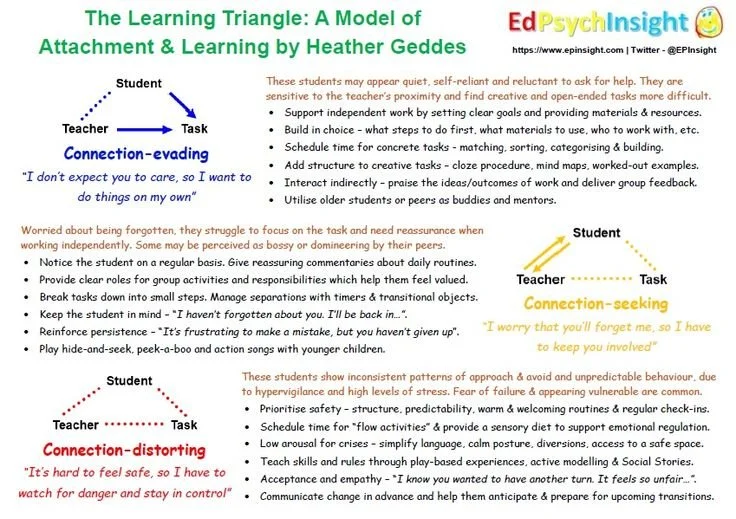Attachment Theory - That’s so interesting!
Attachment theory IS interesting but for anyone who works with children it is of the highest importance to understand and use to inform the work we do.
The more I have learnt about attachment theory the more I see examples of different attachment styles playing out in the classes I teach. Once you start to develop an understanding of it, I have found you can’t un-see it. This doesn’t mean I am getting it right all the time, I don’t, “Good enough” (Donald Winnicott) is always what I am aiming for, as a parent and a teacher.
It has changed some of the things I do, the language I use, and the empathy I have. I still find myself thinking and saying “Why can’t they just…. behave/listen/do the work” but when my amygdala has come out if it’s initial reactive state I am able to try and understand why.
I have been a secondary school teacher for nearly 18 years. I teach Art, Design technology and general supply. I started teaching before I had children but even at the start of my career, I wondered why some students had so much more resilience than others. Why some would crumble or explode at seemingly small things whereas others could manage huge tragedies and adversity in their lives. I don’t think I knew about attachment theory at all. I don’t remember learning about it on my PGCE, perhaps I did but it obviously didn’t have a huge impact.
Now I have a nearly 13 year old I have found I view the teenagers I teach differently, I understand they are still children with children’s brains which years of developing ahead of them. I know for some of them they will not have had the consistently secure attachment I was lucky to have and that my daughters have had. I also know from seven years of drop offs/pick-ups and WhatsApp conversations with the parents of my daughter’s primary school classmates that this doesn’t mean they have bad parents or ones that don’t care. Parenting is hard; we get some things right and some things wrong (back to good enough parenting!) Judgement isn’t useful as a teacher. We need to be curious about all behaviour and ask where it is coming from and why it is happening.
Last school year I started to explore how to communicate the importance of attachment theory to my colleagues. I read books and articles, listened to podcasts and found other illustrators visually exploring this or similar subjects. I shared what I had learnt so far in a 15-minute forum session that my school runs allowing teachers to share ideas and skills.
I started by explaining my understanding of how the brain works and creates memories. I also talked about what happens when we “flip our lids” (Bryson/Siegel) It is important to acknowledge that even as adults we are not always in control of our amygdala, and sharing that information with students can help them to regulate too.
I made this illustration after listening to a You Tube interview with Heather Geddes ( Author of Attachment in the Classroom) .
It relates to Donald Winnicott’s theory and book – The Child, The Family and the Outside World.
How do teachers build a secure attachment?
I don’t have any drawings for this yet because I’m not quite sure of the answer. These are my thoughts so far….
It can feel hard enough to create a secure attachment as a parent with two children but for a secondary school teacher with several classes of 30 is might feel impossible.
Consistency is something schools talk about all the time and with good reason. However I’m understanding that being consistent doesn’t mean treating every child exactly the same way or having exactly that same expectations of them. I don’t do that with my own children, my family or friends. I think as Dan Siegel and Tina Payne-Bryson put it in the title of their book – The Power of Showing up , Showing up is what is important. That doesn’t mean we won’t have days off or off days, it means the students we teach know we are doing our best for them as much and as often as we can.
My book Attachment and Me (Which you can buy here!) communicates visually what a secure attachment might look like between a mother and her baby. Softly drawn illustrations exploiting the inconsistencies of mono-printing, carefully chosen words, type and colours. I am trying to develop that style into a series of illustrations that will help teachers access more understanding about the importance of attachment theory and how it can help them work with the students in their classroom. The images need to be clear and concise but show warmth and empathy as well as communicating the science and solid research that supports attachment theory. Keep an eye on here and my Instagram @laura_bissonnet to see how this project continues.
Bibliography - Reading and listening List
Winnicott D,1964/1991, The Child, The Family and The Outside World London, Penguin
Sielgel D, Bryson T, 2012, The Whole-Brained Child, Great Britain, Clays LTD
Sielgel D, Bryson T, 2020, The Power of Showing Up, https://www.amazon.com/The-Power-of-Showing-Up-audiobook/dp/B07ZZHK17S, (Downloaded October 2022)
Worth Publishing/CourseWeDo, 2021. - Conversations with authors - Heather Geddes. [online video] Available at: https://www.youtube.com/watch?v=6s-WhGqerKo [Accessed March 2022]
Moore, Chris. (2020) 'The Learning Triangle – A Model for Attachment and Learning, T www.epinsight.com, 6th July 2020. Available at: https://www.epinsight.com/post/the-learning-triangle-a-model-for-attachment-learning (March 2022).
Other interesting and Important reading/listening
Podcast – Therapist Uncensored - https://therapistuncensored.com/
Really useful conversations about a huge range of topics from an attachment theory/neurobiology view point
Know me to Teach Me – Louise Michelle Bombèr Available here
I have been working on a series of illustrations based on quotes for this books for www.touchbase.org.uk you can see my illustrations here
Attachment in the Classroom – Heather Geddes
(I am yet to read this one in full but having listened to the interview on YouYube with Heather Geddes I would think the book is useful)
Trauma informed Education - A series of interviews with professionals who work in a trauma informed ways in schools in the UK, USA and Australia. https://soundcloud.com/trauma-informed-education
